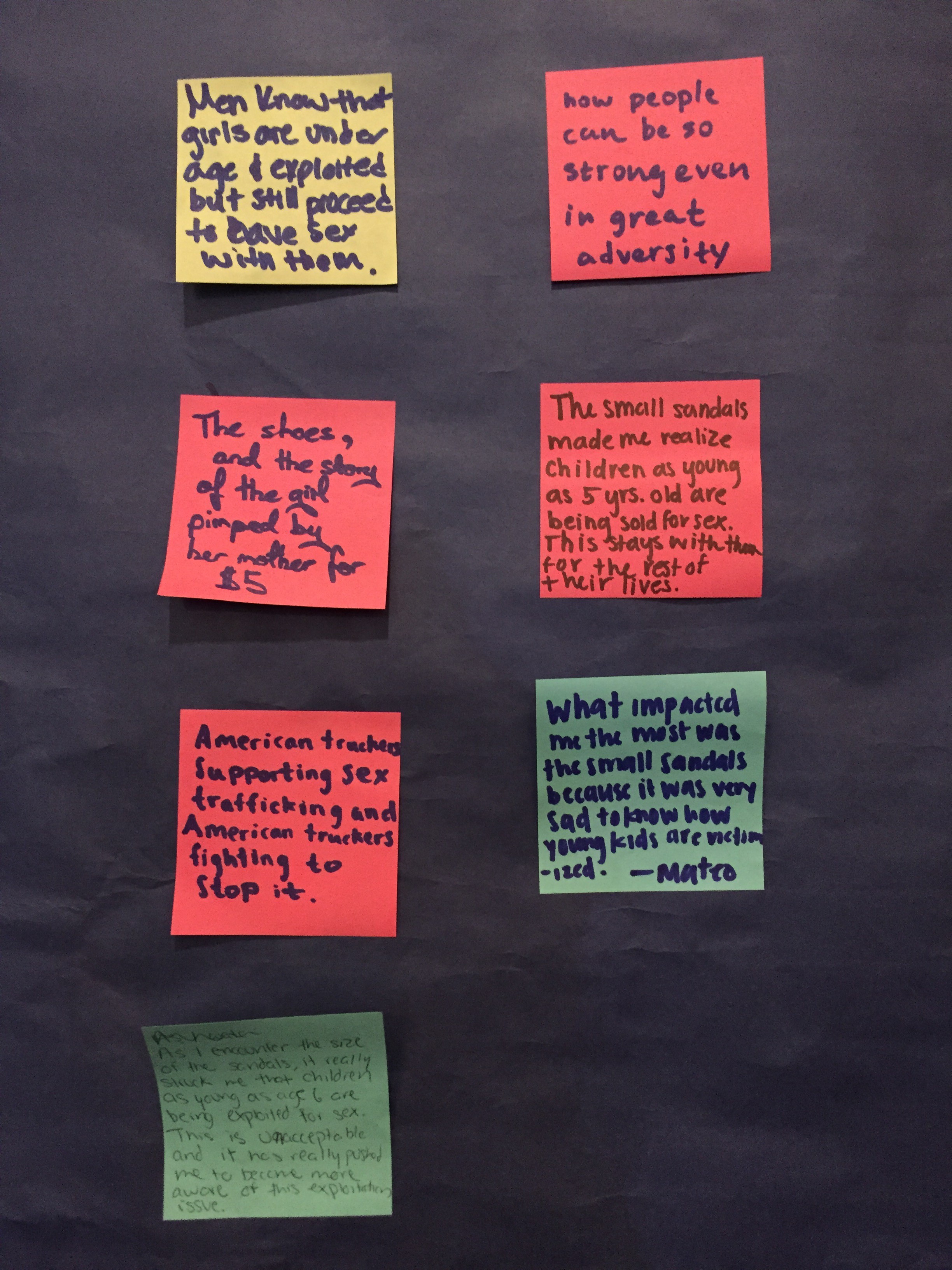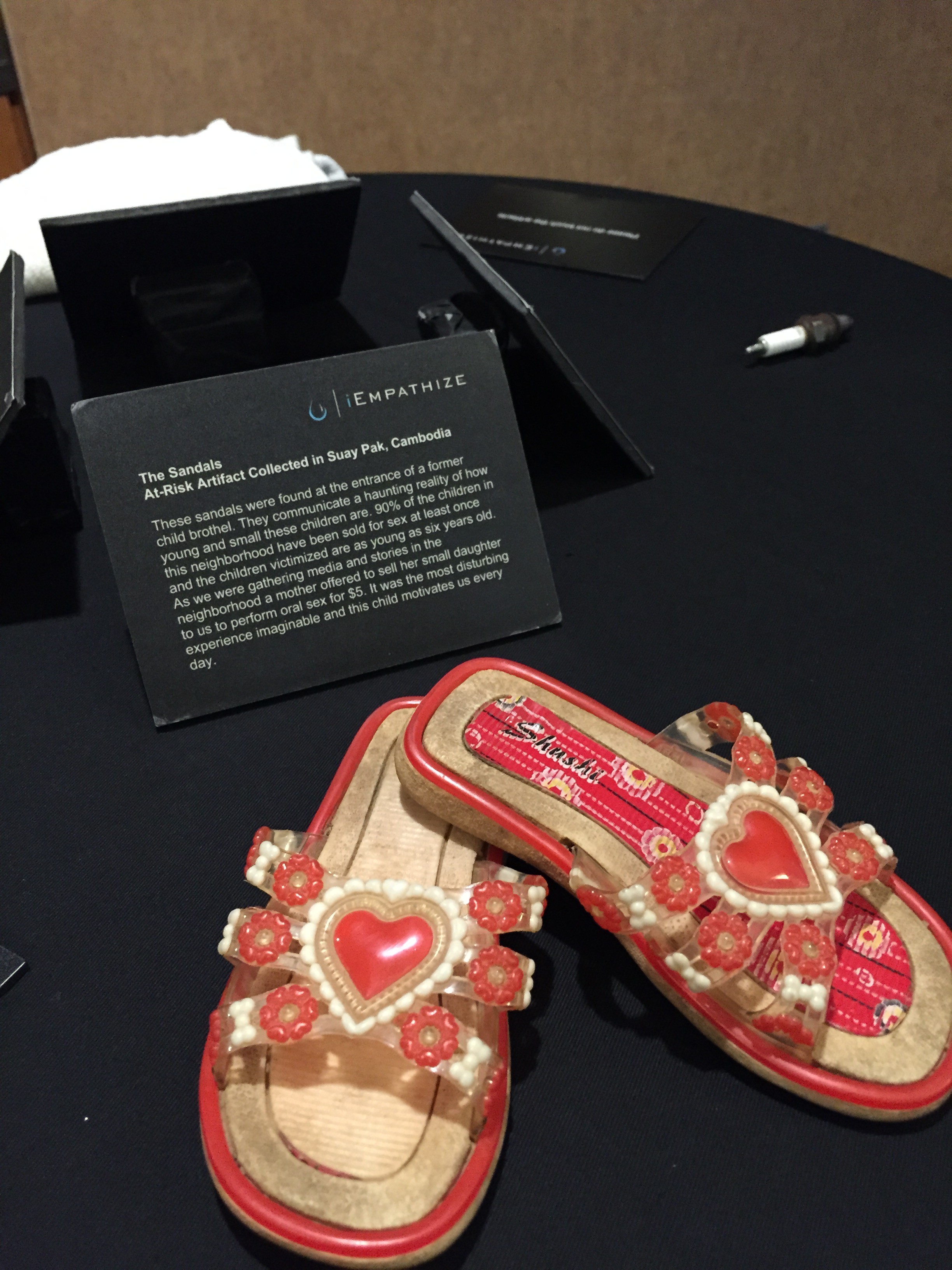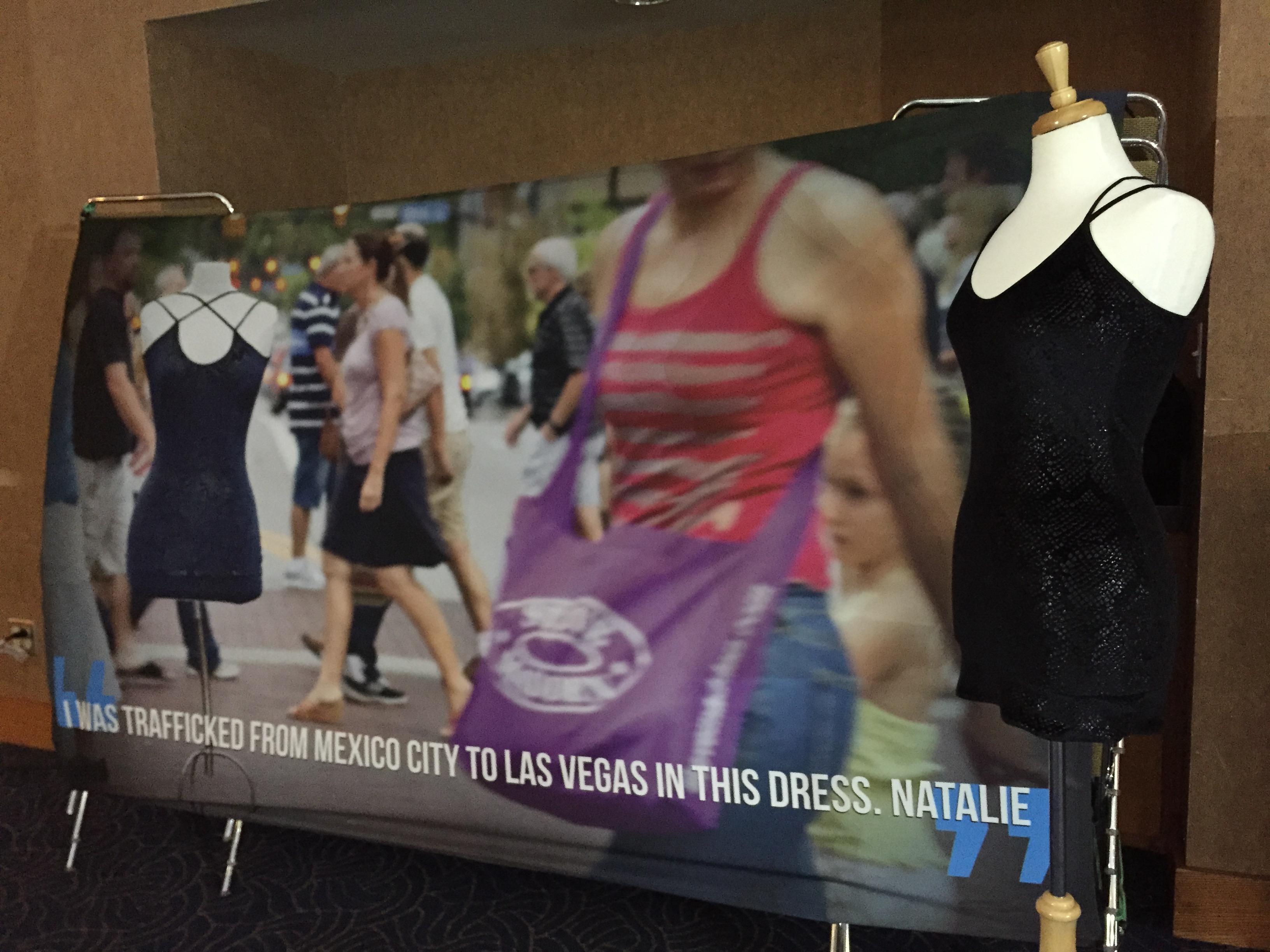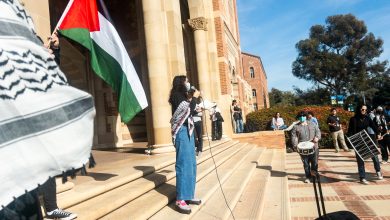Vulnerable: L.A. Stop the Traffik’s Empathy Exhibit

When living in the comfort of one’s own home with the luxury of feeling safe, it can be easy to forget the struggles those who are not as lucky as we are face on a daily basis. It can be difficult to grasp that some of the issues we occasionally hear about on the news, such as poverty, bombings, and human trafficking, are immediate threats to people somewhere in the world. Only when it might be too late, and when it affects us and those who we care about, do we begin to take such issues into consideration. One of the main issues young men, women, and children face around the world is human trafficking.
Human trafficking is the taking and selling of humans in exchange for forced labor or sexual exploitation. According to the United Nations Office on Drugs and Crime, exploitation on account of human trafficking includes “the prostitution of others or other forms of sexual exploitation, forced labour or services, slavery or practices similar to slavery, servitude or the removal of organs.” This can occur to individuals in their home countries or while one is visiting abroad; it is a global problem which can affect individuals of all ages, genders, or classes.
Last week, as part of Sexual Assault Awareness Month at UCLA, LA Stop the Traffik hosted an Empathy Exhibit dedicated to raising awareness of human trafficking all over the world. This exhibit included survival stories, photos, and artifacts retrieved from brothels and from survivors. Upon entering the exhibit, I did not know what to expect. I was warned that some of the material displayed could be overwhelming and highly triggering. I thought that I could handle it, but after learning only a couple of stories, I became dizzy and was nearly in tears.
The first artifact that caught my eye was a pair of pink sandals small enough to fit a five-year-old child. This pair of sandals was found outside of a former child brothel in Suay Pak, Cambodia by the iEmpathize team. According to the writing next to the artifact, “90% of the children in this neighborhood have been sold for sex at least once and the children victimized are as young as six years old.” As the team examined the area for evidence and stories, they were approached by a mother who tried to sell her young daughter to perform oral sex on them for five dollars.
This just goes to show that sexual exploitation is not only implemented by pimps, but also by children’s own mothers in an effort to obtain money. Cambodia is one of the world’s most poverty-stricken countries, with about one-third of the population living on less than one dollar per day, according to BBC News. Human trafficking can be linked to poverty in third world countries, where the issue is most prominent.
Another story that touched my heart was Natalie’s. Natalie was tricked into taking money from a couple of conniving men who she had to pay back by selling her body. She lived a normal life but struggled financially just like many of us. These men who kindly offered her free money, or so it seemed, earned her trust to such a level that Natalie would be caught at her most vulnerable state. After the transaction was complete, they revealed to Natalie that she must pay them back within a number of days, something that was nearly impossible for her to do. The pimps, knowing this would be the case, told her that if she sold herself in exchange for sex, she would be able to pay her debt in no time.
This is a strategy often used by pimps; they earn the trust of others through fraud and deception until they are vulnerable enough to be forced into sex exploitation. Natalie had sex in exchange for money over fifteen different times a night; it became her job. She was taken into hotel rooms where she was forced to obey her client’s orders…it was her only option. The dress in which she was trafficked was displayed at the exhibit with her quote, “I was trafficked from Mexico City to Las Vegas in this dress.” A little, tight black dress was her home for months. It’s something most of us cannot even wrap our heads around.
Almost 21 million people are victims of forced labor, of them 11.4 million are women and girls and 9.5 million are men and boys. A person carries this kind of trauma with him or her for the rest of his or her life. Children who are abducted, sold, and not rescued grow up thinking that these crimes are normal.
iEmpathize asks us to take an active response to the suffering of others. The iEmpathize team has rescued many men, women, and children and has established a community to help them gain back their life and dreams. It was reported that many children, before being rescued, had no dreams or aspirations. However, after being rescued many of these children developed dream journals which include photos of what they hope their future will look like.
At the end of the exhibit, individuals were asked to write what impacted them the most from the artifacts or stories shared on a small note pad. The majority declared that the story attached to the pair of sandals was the most shocking. It is most impactful to be a first hand witness of an artifact with such a strong, emotionally triggering story attached to it. Because of this, the iEmpathize team believes that evidence and the media is the key to triggering empathy and ultimately the key to help those suffering.
The first step to being part of the solution is to be informed. Terms that have been popularized by the mainstream media to refer to playful slang are “pimp” and “child prostitute.” Take a step back, strip these terms of their stigma, and be mindful of the political meaning behind these terms. The National Human Trafficking Resource Center has useful information to begin your journey in helping those who are suffering. You can volunteer for a trafficking hotline or at a shelter for survivors of human trafficking. Getting involved on campus is also just a click away (email stopthetraffick.la@gmail.com). You have the power to change the world around you, and have the luxury to access information that can potentially lead to saving lives…do something with it.






